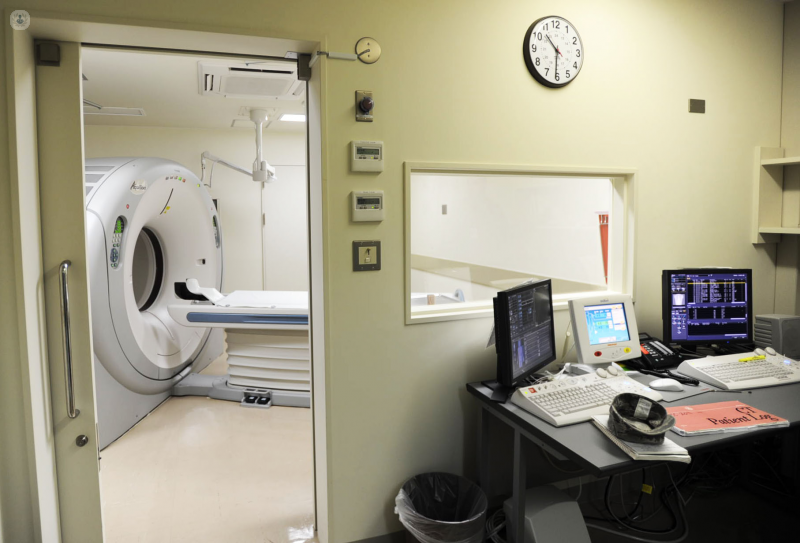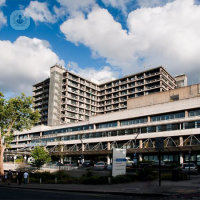Virtual colonoscopy
Dr Vikram Sharma - Gastroenterology
Created on: 07-22-2015
Updated on: 09-21-2023
Edited by: Aoife Maguire
What is a virtual colonoscopy?
A virtual colonoscopy, also known as a CT colonography, is a type of scan which produces detailed images of the large intestine using low bursts of radiation. The scan is generally used to look for small growths called polyps in the colon and screen for bowel cancer.
What does it involve?
A virtual colonoscopy is similar to other types of CT scan. It involves lying on a bed inside a CT scanner which rotates around you taking hundreds of detailed pictures of your abdominal organs. These are combined to produce a three-dimensional model of your large intestine and any growths within it. The doctor can then “look around” the model, as though they were actually travelling through the colon.
Unlike a traditional colonoscopy, a virtual colonoscopy can be carried out while awake, and is much faster, taking only 15 minutes to complete.
Why is it done?
A colonoscopy is most commonly performed to detect small growth called polyps in the large intestine. These do not cause symptoms but can turn into bowel cancer if not removed, so it’s important to detect them early.
Bowel cancer is one of the most common forms of cancer in the UK, which is why bowel scope screening is automatically offered to people over the age of 55. A colonoscopy is only recommended as a follow-up to polyps being found during bowel scope screening. In most cases, a traditional colonoscopy is offered, but some people have health problems that would make this unsafe. In this situation, a virtual colonoscopy is an effective alternative.
How to prepare
Your doctor will advise you on any dietary restrictions before the exam. It is likely you will be required to clear out your bowels, in which case you may only be able to drink liquid in the day before the exam, and you might be given medication or a laxative. It is also usually necessary to drink a contrast liquid to help polyps show up better in the scan. You should let the doctor know if you have problems with your heart, liver, or kidney, because this process is not safe for everyone.
Finally, you should tell the doctor if you might be pregnant, as a CT scan could carry risks for your child.
What to expect
The procedure is very fast and painless. You will be asked to lie down on the exam table, and a small tube will be inserted into your rectum, to help inflate the intestine and reveal any polyps that are “hiding”.
The exam table will then slide into the scanner, which will rotate around you capturing images at a high speed. You might be asked to hold different positions, turn onto your back or side, or hold your breath for a few seconds. Once the scan is finished, the tube will removed and you will be free to leave.
What do abnormal results mean?
In the vast majority of cases, an abnormal result means that polyps have been found but they are not cancerous. If polyps are found, they cannot be removed during a virtual colonoscopy, so you will need to return for another appointment.
Bowel cancer is a much rarer result. If it is found, you will likely be given an appointment to see a specialist as soon as possible.
Recent advances in virtual colonoscopies
Virtual colonoscopies have benefited from recent advances in CT scanning technology. Now, CT scanning machines can produce much more detailed pictures, resulting in an accurate three-dimensional model that is effective for recognising larger polyps. The speed of picture taking has also increased, meaning less time on the exam table and a better patient experience.








